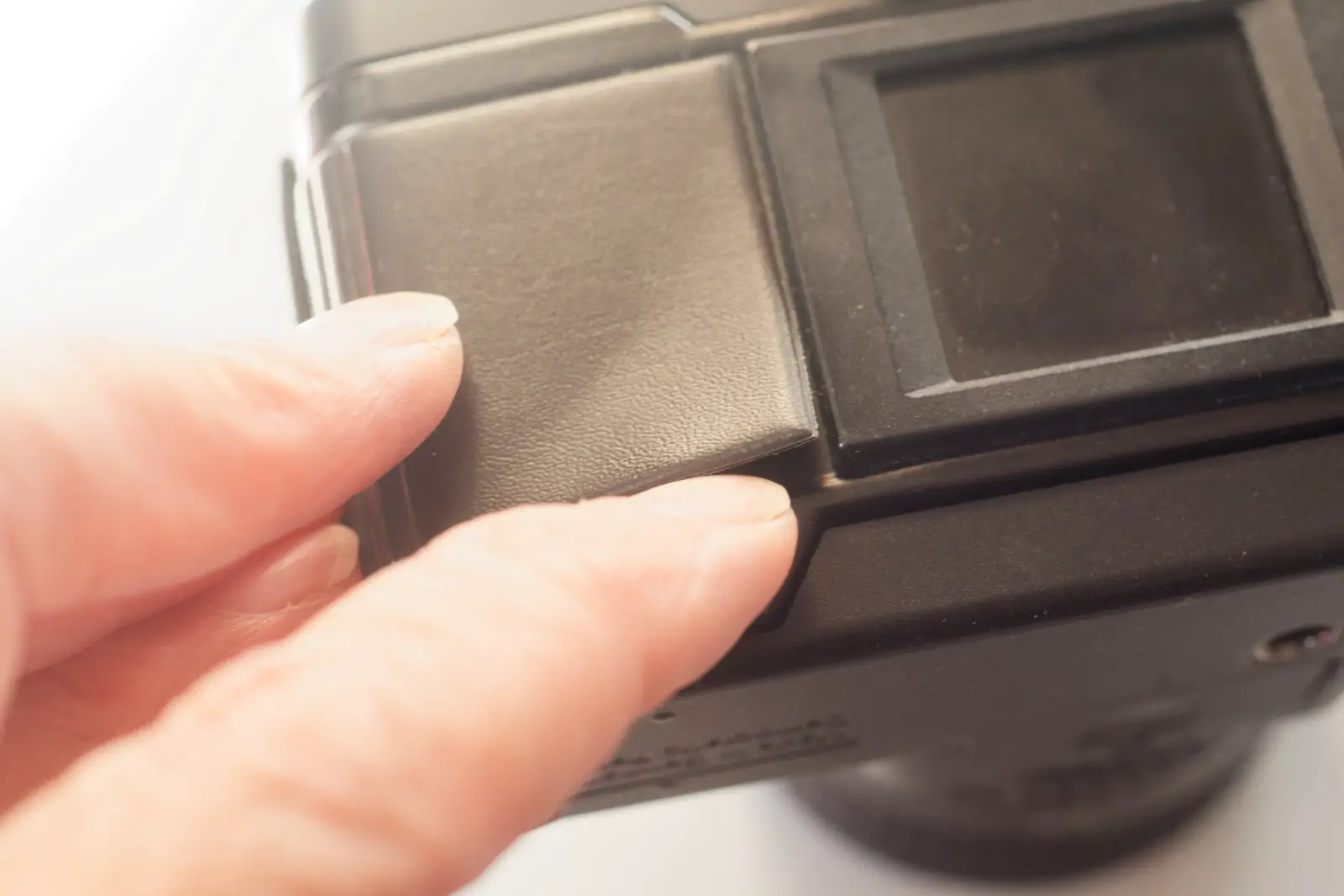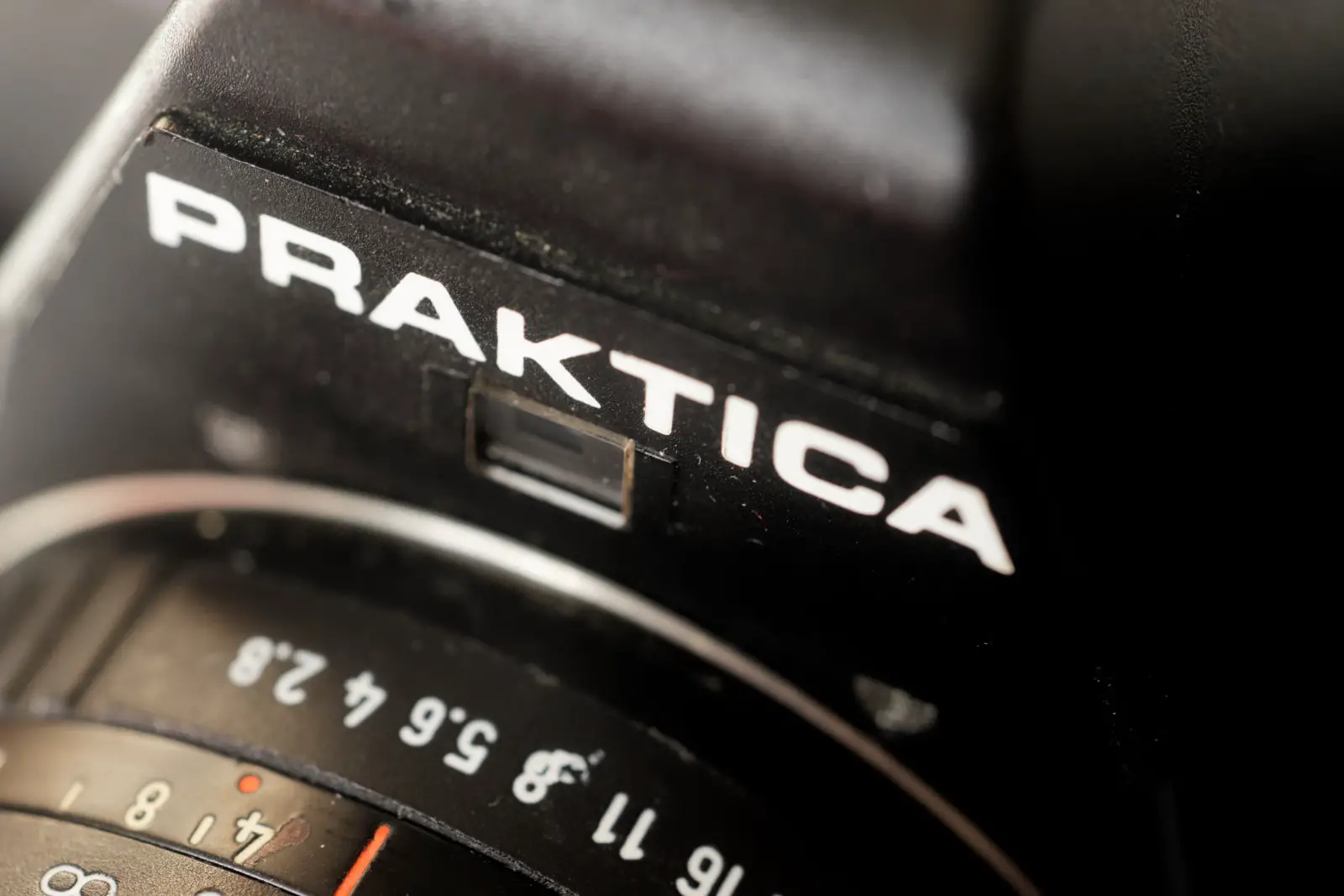I’ve recently been shooting with a Praktica BX20, which was one of the last Praktica models produced by Pentacon before they were wound up in the wake of German unification.
The company Pentacon was born out of a merger of various East German-based camera manufacturers after the war. Most prominent of these was Zeiss Ikon AG Dresden. Over the years KW, Welta, Ihagee and Meyer were absorbed.
At first the company re-used the ‘Contax’ name. At the end of the 1940s they produced a series of modern SLR cameras featuring an M42 screw thread mount and a fixed pentaprism. Disputes with the Western arm of Zeiss led to them switching away from Contax as a company name. After experimenting with the name Pentax they settled on Pentacon (an alternate blending of Pentaprism and Contax). They passed the Pentax brand name on to Asahi.
Disappointingly after the Contax branded models, the follow-ups were not very innovative. They did have a few nice touches from the Pentaprism Contax models. One of these was the 45 degree angled shutter release intended to cut down on the amount of camera shake.
Chief amongst the attractions was the price. These were very good value for money cameras. There was a suspicion that eastern bloc countries sold at cost (or possibly below) to generate foreign currency. Another attraction was that it was possible to get Zeiss Jena lenses for them. Build quality might have left some of the East German and Russian lenses a little down people’s lists for desirable lenses, but the optical quality was generally very good.
Praktica
The Pentacon SLRs tended to be branded as Praktica in the west after KW joined Pentacon in 1959. They were cheap and serviceable – not as solid as the Soviet Zenith cameras, but a little more sophisticated. Praktica was a brand that schools and colleges tended to buy in for their photography courses in the late 70s and early 80s. They gave the required level of control without being so desirable that students would ‘liberate’ them.
M42 vs Bayonet
One of the problems encountered by companies using the M42 mount was communication between the camera and lens. An automatic diaphragm was relatively easy. It was more difficult to transfer information on selected aperture from the lens to the camera. Pentax and Fuji came up with mechanical methods. Praktica went for electrical connections.
However, the writing was on the wall for M42. Over time Pentax, Fujica and Praktica switched to their own bayonet mounts.
The B system
In 1979 Pentacon brought out the Praktica BC 200. It had a new bayonet mount. Unfortunately this was at a time when Pentax K mount was becoming almost universal, so the ‘PB’ mount had an uphill battle.
Pentacon did have the advantage of Zeiss Jena making lenses for the PB mount. The specification of the cameras was also quite good for its time.
The cameras featured stepless electronic shutters, full information viewfinders, autowinder support and depth of field preview. They were also pleasingly small – certainly in comparison to the clunky M42 Praktica models.
They did have a strange look though. The original BC 200 reminds me of a Pentax Auto 110 that has had a growth spurt. I really like the Auto 110, but its aesthetics are not a high point, so this may not have helped the BC 200.
The BX-series
The subject of this review is the Praktica BX20 from the BX series of cameras. These later cameras had a different design. the BX20s could also read DX codes.
Build quality
When you look at the Praktica BX20 the word ‘cheap’ comes to mind.

The body is made of one of those hard plastics that manages to look particularly plasticy. The front of the body is bare of any covering. There are no engravings, just transfers – or in the case of the shutter speed dial, paint on top of raised lettering (you know, the sort that rubs off remarkably quickly).



The back of the Praktica BX20 features two sections of pookie PVC. While this does have a tendency to peel, it hasn’t actually shrunk in over 30 years since these cameras were last made.

On the whole, one would have to be very generous to talk favourably about build quality.
Praktica BX20 Specification
Despite the build quality, this camera does have a surprising number of things going for it.
- It has a constantly variable electronic shutter which indicates speeds by LEDs in the viewfinder.
- As well as showing the speed the camera thinks should give proper exposure when the shutter speed dial is off ‘Auto’, it also shows the value that you are set to allowing the photographer to match up and be aware of what shutter speed is set.
- It has an ‘Aperture Direct Window’ at the bottom of the viewfinder which shows you the aperture value set on the lens. More than that, if the shutter is not cocked, the ADW window shows a red tint.
- Like the original BC 200, The split image rangefinder is diagonal to suit horizontal or vertical surfaces and incorporates three wedges rather than the usual two. It also has a microprism collar.
- It has an exposure compensation dial combined with the ISO values dial that indicates via an LED in the viewfinder when you have compensation set.
- In addition to the exposure compensation dial it has an exposure lock button on the front edge that you can use to ‘trap’ an exposure value prior to recomposing.
- It has a mechanical self-timer combined with a depth of field preview lever.
- It takes an autowinder.
- It takes a commonly available 28L 6v lithium battery to power the whole thing.
It might look as cheap as chips, but the Praktica BX20 is actually very well specified and avoids many of the petty annoyances that favoured classics manifest.
Age has not been kind to some of these cameras. The one I’m using is fine mechanically, but there is a black ‘smudge’ at the bottom of the viewfinder that suggests the silvering on the pentaprism might be going. This would be consistent with observed levels of build quality.

The Zeiss Jena lenses are relatively expensive, but the ‘Parkticar’ ones are cheap and don’t seem too bad.
Pictures










Praktica BX20 In use
That specification does make the Praktica BX20 a very usable camera. It does just about everything you could reasonably expect a non-professional manual focus analogue camera to do.
It meters well, protects the film from light and gives you all the information and control you could reasonably ask for. There are some neat design touches. I get the impression that it was designed by photographers. The idea is great, even if the execution is a little lacking.
I can understand why it was put together from cheap components. It’s competition had autofocus, built in winders and super-fast shutter speeds. Cheap must have looked like the way to go, but this camera could have been so much more.
I can’t bring myself to love it, but like the slightly scruffy fox that lives under the shed at the bottom of my garden, I’ve developed a fair amount of respect for it.
The end for Pentacon as a camera manufacturer
Preparing for reunification, Pentacon was placed in the hands of the ‘Treuhand’ who opted for liquidation. Production in Germany ended in June 1991. Over three thousand people (93% of the workforce) lost their jobs overnight. The Assets were bought up, but production was outsourced to South Korea. All photo products were finally discontinued in 2015.
Share this post:









Comments
Jens on Praktica BX20 – End of the line for Pentacon – By Bob Janes
Comment posted: 12/12/2022
The great advantage of this camera was the TTL-Flash-Automatic.
So the BX 20 was on par with cameras like Minolta X-500.
Unfortunately they built some parts of light materials. I had several times problems with the transport gearing.
Today i use the predecessor B200 (same as BCX) with great joy. The built quality ist much , much more better than the later BX types !!!
The exposure meter on the B200 works similar like the meter on the Nikon F3, it is a spot meter. (The informations around this theme in the web are very hidden, but i use it since 20 years and learned about it.)
Of course, the Prakticar lenses are great, i use the earlier M42 Pentacon and CZJ lenses on the B200 too.
Comment posted: 12/12/2022
Barry Reid on Praktica BX20 – End of the line for Pentacon – By Bob Janes
Comment posted: 12/12/2022
Comment posted: 12/12/2022
R Chan on Praktica BX20 – End of the line for Pentacon – By Bob Janes
Comment posted: 12/12/2022
Comment posted: 12/12/2022
Comment posted: 12/12/2022
Comment posted: 12/12/2022
Peter Lenz on Praktica BX20 – End of the line for Pentacon – By Bob Janes
Comment posted: 13/12/2022
Bob Janes on Praktica BX20 – End of the line for Pentacon – By Bob Janes
Comment posted: 13/12/2022
Ibraar Hussain on Praktica BX20 – End of the line for Pentacon – By Bob Janes
Comment posted: 14/02/2023
Bob Janes on Praktica BX20 – End of the line for Pentacon – By Bob Janes
Comment posted: 14/02/2023
Nathan C-B on Praktica BX20 – End of the line for Pentacon – By Bob Janes
Comment posted: 12/05/2023
I have roughly 20 Praktica cameras and numerous CZJ glass that I just adore. I feel like the peak in quality and features started to drop after the BC3, and in my opinion, of the various BC1's, 2's, 3's, BX20's and the BX20S that I own, my favorite has to be the BC3. I genuinely don't know what they were thinking with ergonomics when they designed the BX20S, it almost hurts to hold it in your hands for any longer than 20 minutes.
Great article by the way, Praktica have a very interesting history even if you're not a fan of what they produced.
Comment posted: 12/05/2023
Bruce Whitfield on Praktica BX20 – End of the line for Pentacon – By Bob Janes
Comment posted: 18/05/2023
Ian Graham on Praktica BX20 – End of the line for Pentacon – By Bob Janes
Comment posted: 05/10/2024
In over 20 years this camera and it's clunky shutter has never let me down and it's one of my three favourite "go to" cameras. The f1.4 lens however is somewhat odd in that it can produce an exceptional image or an indifferent one, you just don't know but I still had the f1.8 lens and the PB mount 35-70 and 70-210 zooms are excellent as well as small.
Adolfo Rozenfeld on Praktica BX20 – End of the line for Pentacon – By Bob Janes
Comment posted: 03/03/2025
I have several of them, and while they may have electronic issues (probably rusty contacts), the viewfinders and mechanical elements work perfectly in all cases. Plus, of course, the Zeiss Jena lenses are terrific. The camera specs were very competitive when the line was introduced in 1979, then essentially the country crumbled.
Comment posted: 03/03/2025